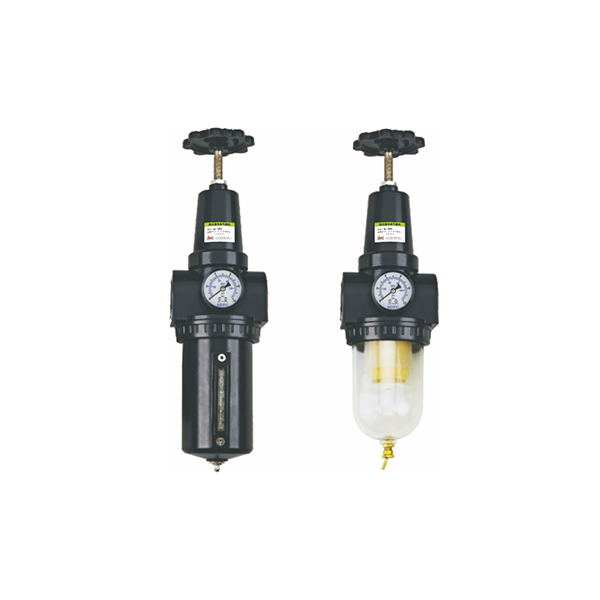The Working Principle and Application of Filter Regulator
In the realm of industrial automation and pneumatic systems, the filter regulator plays a crucial role in ensuring the smooth and efficient operation of equipment. This device serves dual purposes: it filters out contaminants from the compressed air supply and regulates the pressure to a stable level, thereby protecting sensitive components and enhancing overall system performance. Bag Filtration Equipment Co., Ltd.(SBFEC), as a company focusing on the research and development and production of bag filtration equipment, is committed to providing high-quality filtration solutions. The bag filtration equipment produced by the company is widely used in various fields and has won the trust and praise of users for its excellent filtration performance and stable operation performance.

Working Principle
Filtration Process
At the heart of the filter regulator lies its filtration mechanism. Compressed air, often laden with particles, moisture, and oil, enters the device through the inlet port. The first stage of filtration typically involves a particulate filter that traps dust and dirt particles larger than a certain size. Subsequent stages may include coalescing filters that separate and condense moisture and oil droplets, allowing them to be drained away. The final stage may feature an activated carbon filter to remove odors and trace contaminants.
Pressure Regulation
Once the air is clean, it proceeds to the regulation section of the filter regulator. This component uses a diaphragm or piston-based mechanism to control the outlet pressure. As the incoming air pressure fluctuates, the diaphragm adjusts its position, opening or closing a valve to maintain a constant outlet pressure within a set range. This ensures that downstream equipment receives a stable and reliable air supply, preventing damage due to over-pressurization or under-pressurization.
Drainage System
Many filter regulators are equipped with automatic or manual drainage systems to remove accumulated moisture and oil. Automatic drains operate via a timer or pressure differential, opening periodically to discharge contaminants. Manual drains require periodic checking and opening by operators to ensure the filter remains effective.
Key Selling Points
Enhanced System Reliability
By effectively removing contaminants and maintaining a constant pressure, filter regulators significantly enhance the reliability of pneumatic systems. They protect sensitive valves, actuators, and sensors from damage caused by dirt, water, and pressure variations, reducing maintenance costs and downtime.
Improved Efficiency
Stable air pressure ensures that pneumatic components operate at their optimal efficiency. This leads to more consistent performance, faster cycle times, and reduced energy consumption. In manufacturing environments, this translates into higher productivity and cost savings.
Versatility in Applications
Filter regulators are versatile devices suitable for a wide range of applications. From automated assembly lines and robotic systems to paint spraying and air-powered tools, they play a vital role in maintaining the integrity and performance of pneumatic circuits. Their compact design and ease of installation make them ideal for integration into existing systems or new installations.
Environmental Benefits
By reducing the emission of contaminated air into the atmosphere, filter regulators contribute to environmental sustainability. Cleaner air in pneumatic systems also means less wear and tear on components, extending their lifespan and reducing waste.
Applications
Manufacturing and Automation
In manufacturing environments, filter regulators are indispensable for automated assembly lines, where precise control of pneumatic components is crucial. They ensure smooth operation of robotic arms, conveyors, and other automated equipment, enhancing productivity and quality.
Paint Spraying
In paint spraying applications, consistent air pressure is essential for achieving a uniform finish. Filter regulators maintain stable air flow, preventing paint defects such as orange peel and overspray, while also protecting spray guns from contamination.
Pneumatic Tools
Air-powered tools such as drills, grinders, and impact wrenches rely on clean, regulated air for optimal performance. Filter regulators prevent these tools from clogging and wearing out prematurely, ensuring they remain reliable and efficient.
Food and Beverage Processing
In the food and beverage industry, hygiene is paramount. Filter regulators ensure that compressed air used for conveying, mixing, and packaging is free from contaminants that could compromise product safety or quality.
Conclusion
The SBFEC filter regulator is a vital component in ensuring the smooth and efficient operation of pneumatic systems across various industries. By filtering out contaminants and regulating pressure, it enhances system reliability, improves efficiency, and supports a wide range of applications. Its compact design, ease of installation, and environmental benefits make it an indispensable addition to any pneumatic circuit. By understanding its working principle and recognizing its key selling points, businesses can leverage the full potential of this versatile device to optimize their operations and drive growth.
https://www.cnsbfec.com/the-working-principle-and-application-of-filter-regulator.html
www.cnsbfec.com
上海袋式除尘配件有限公司

Average Rating